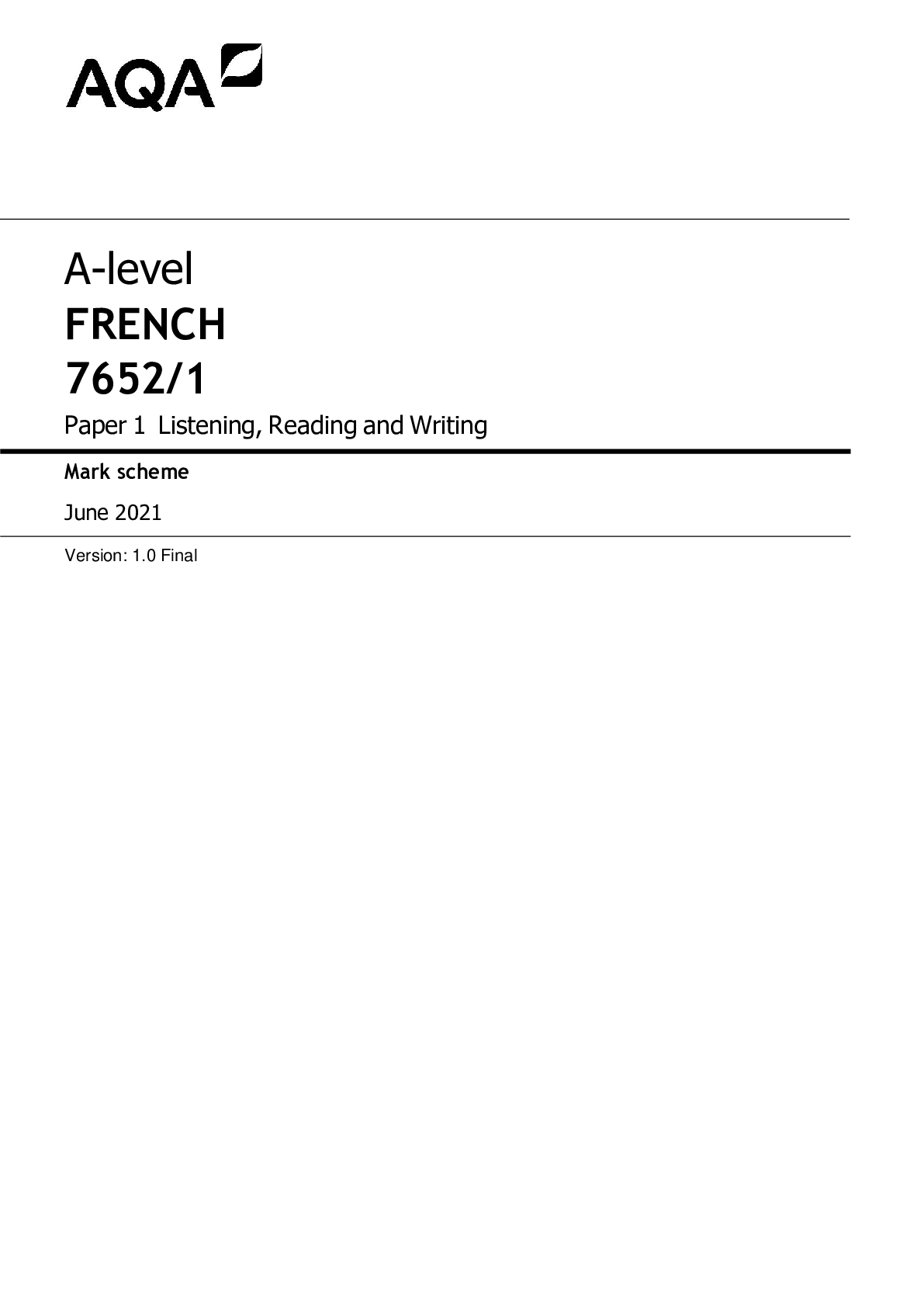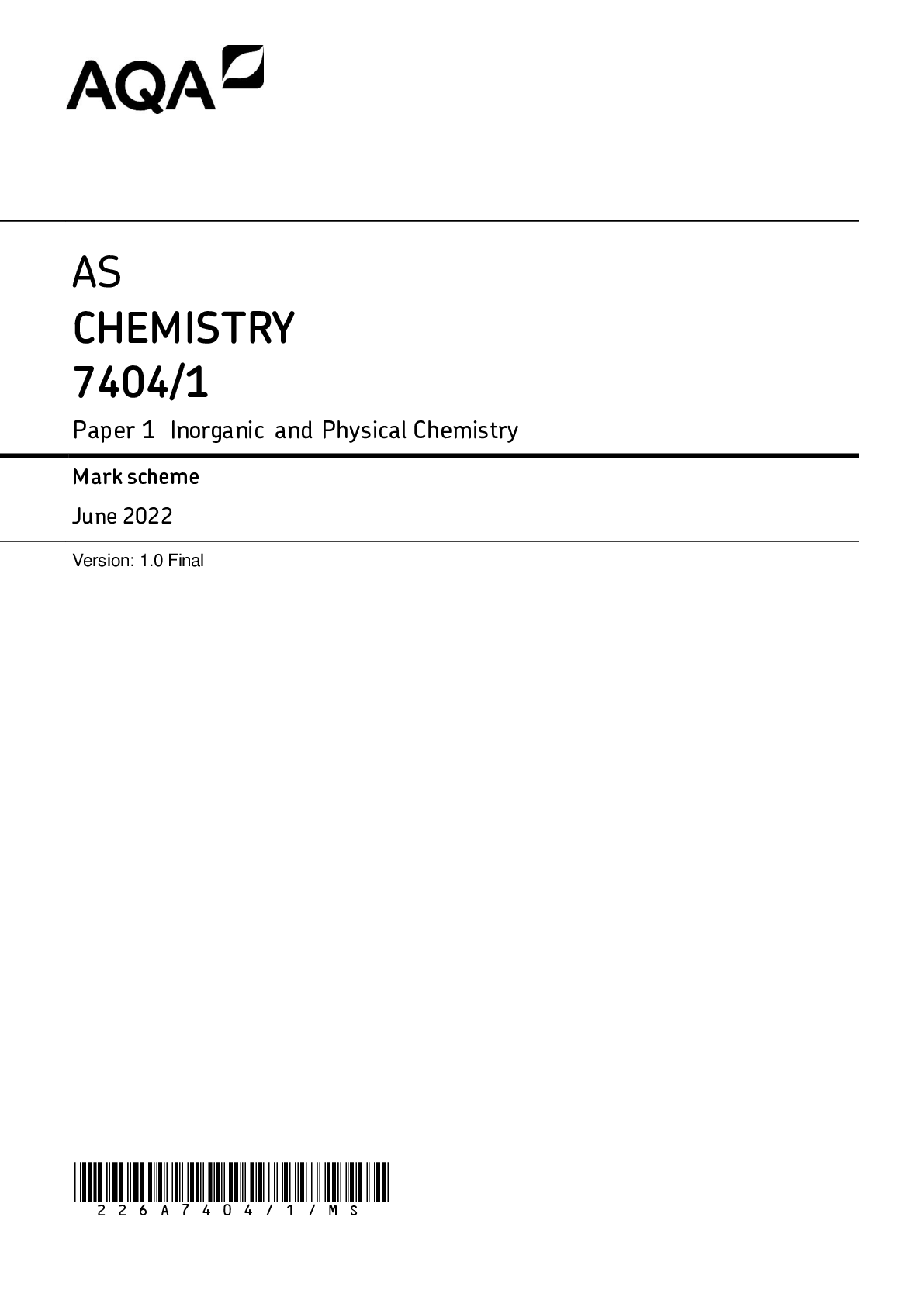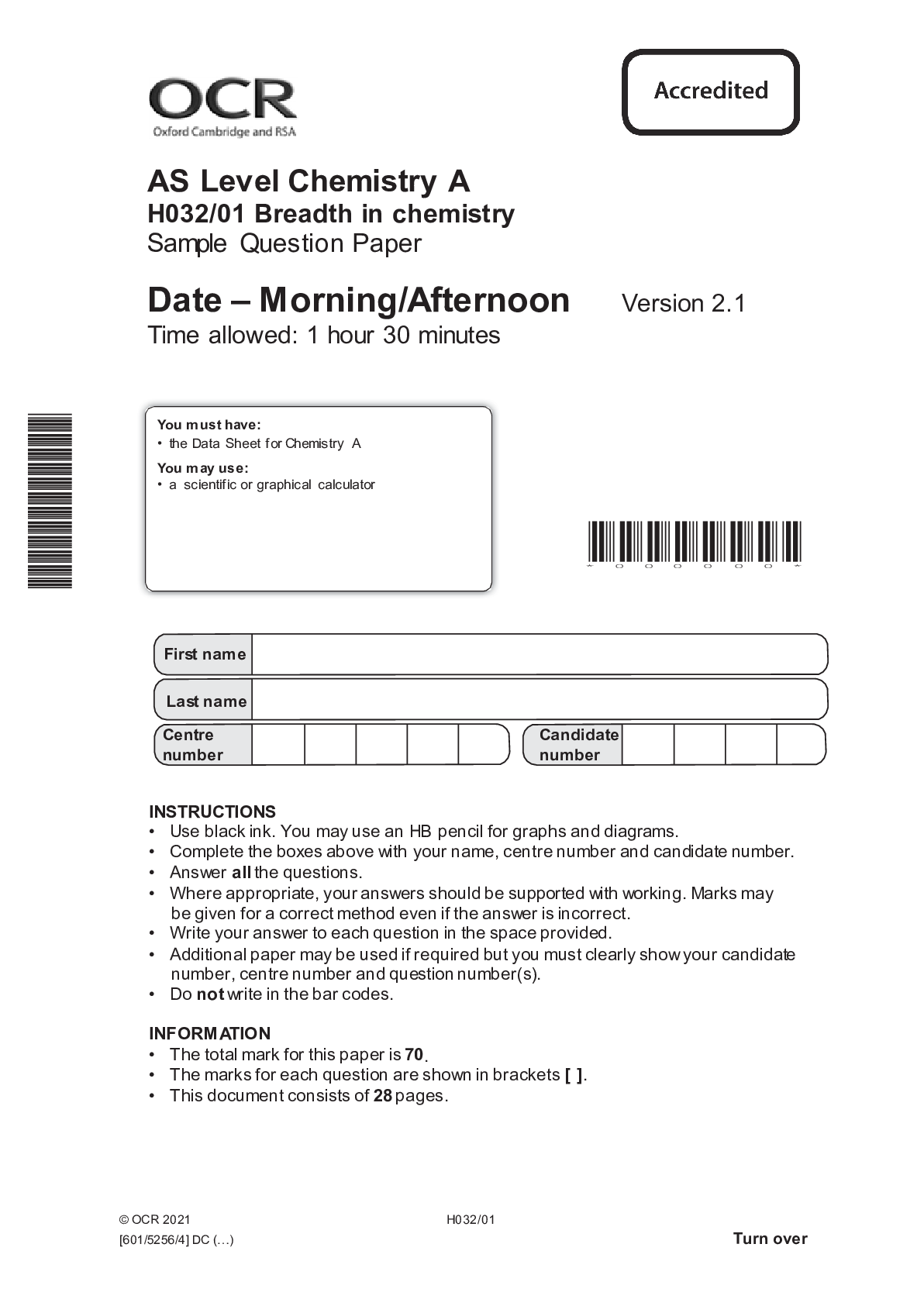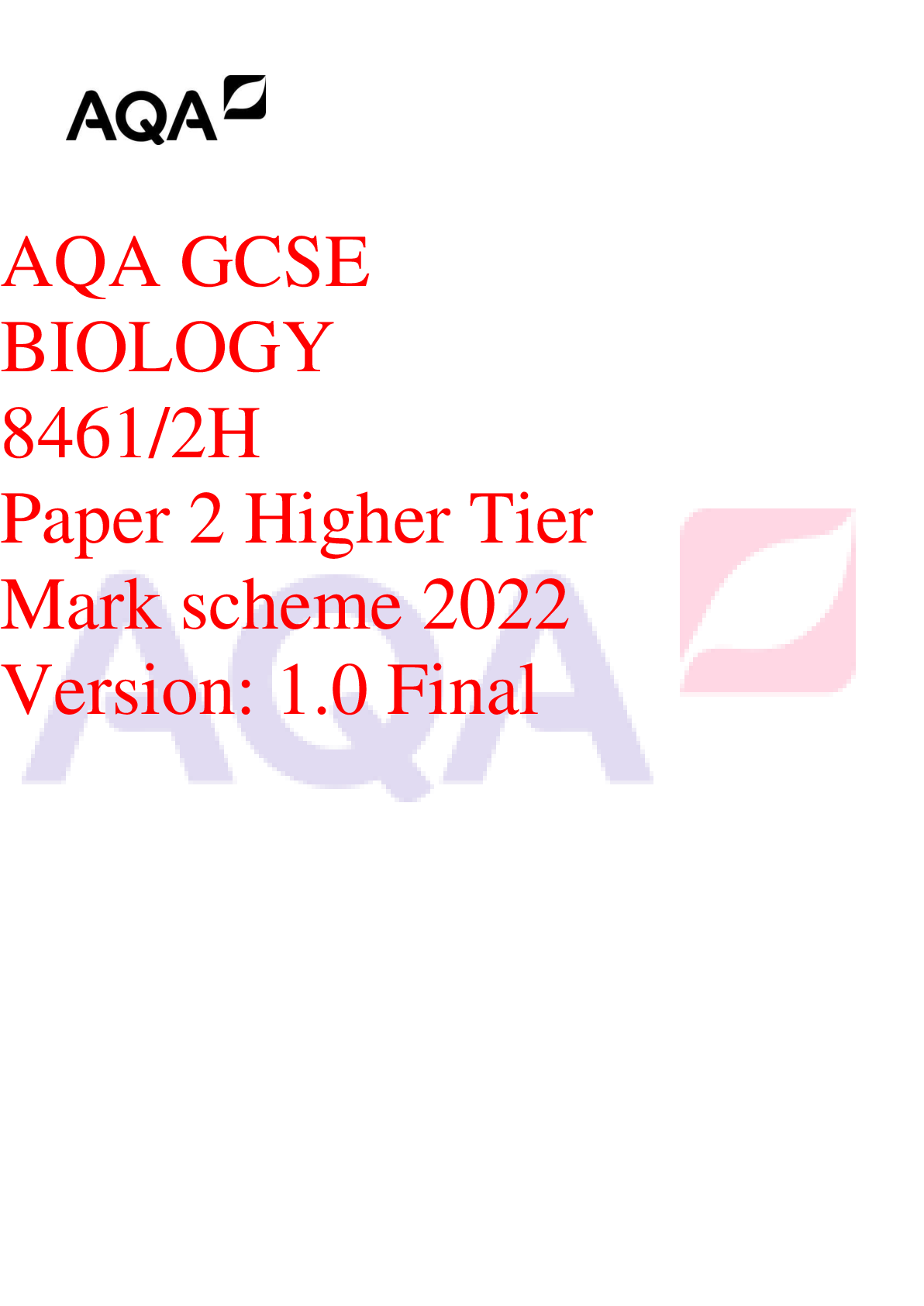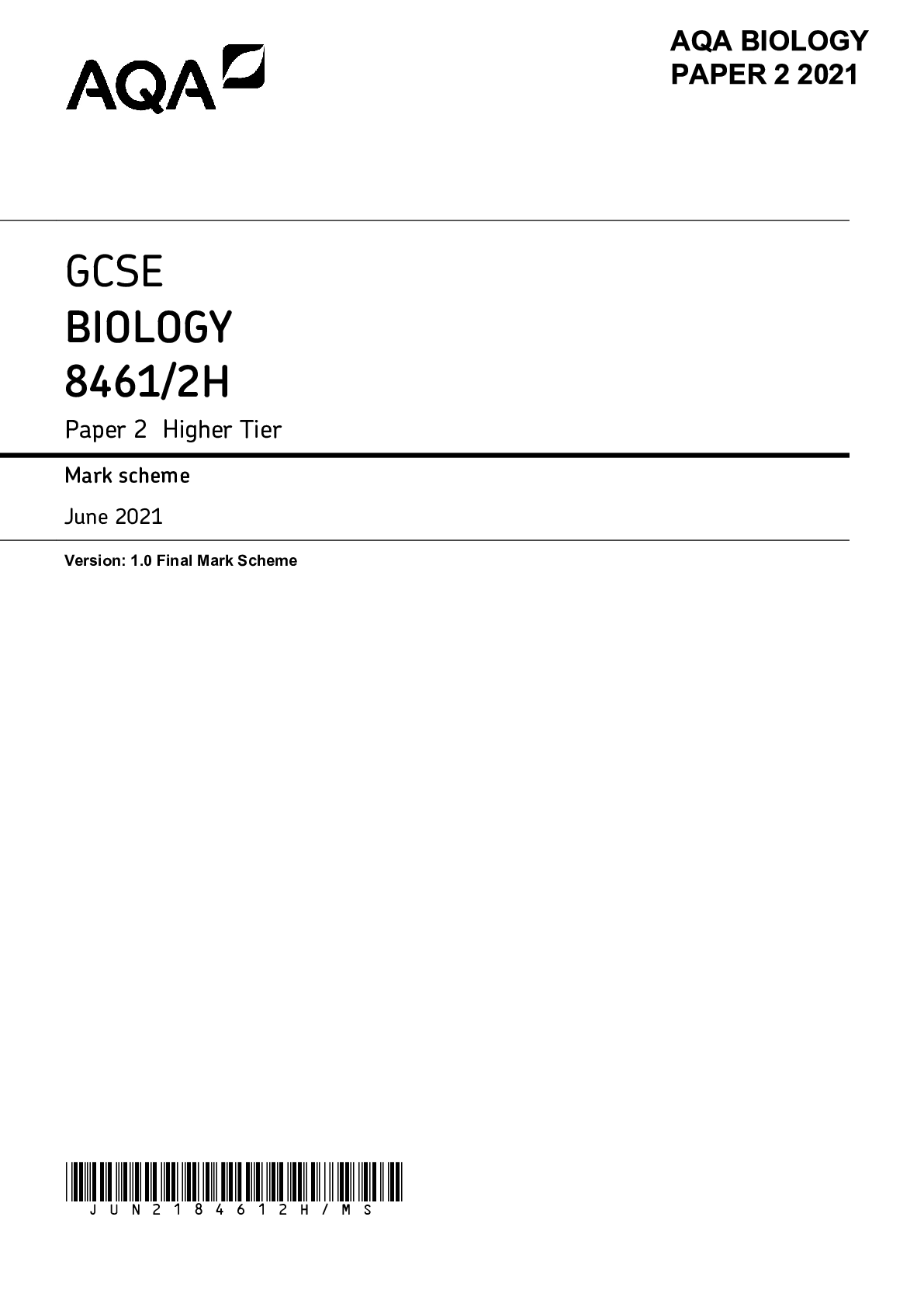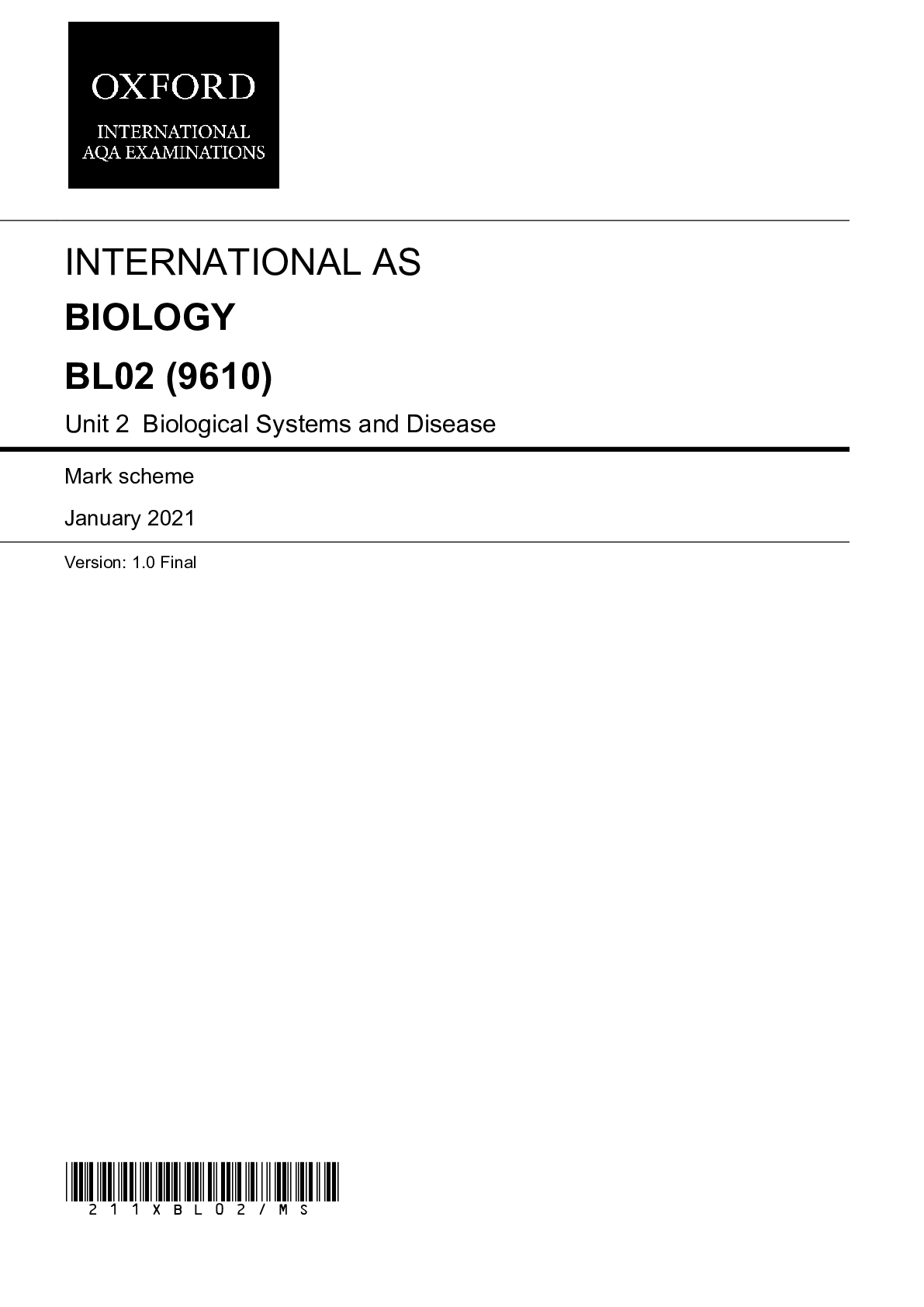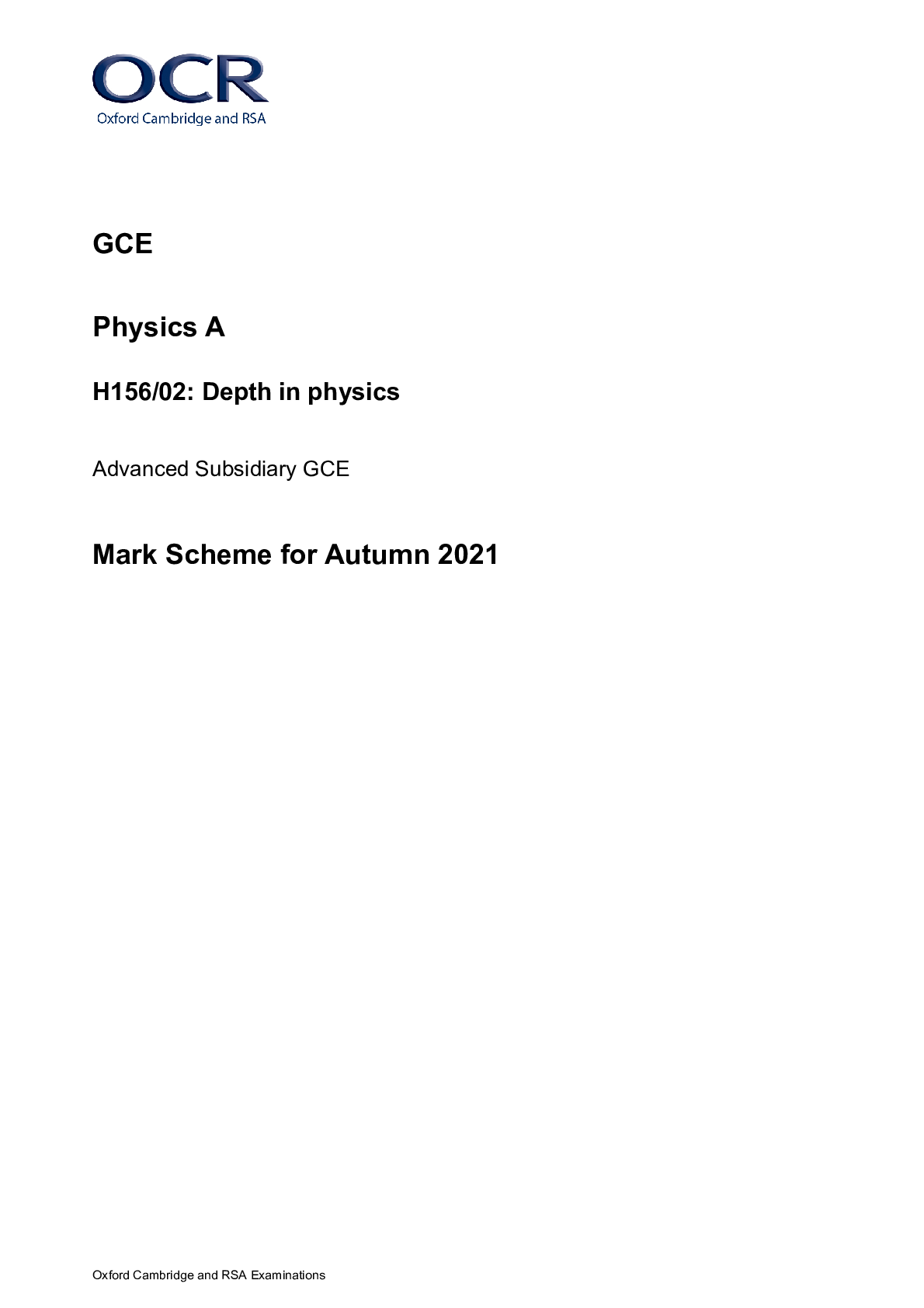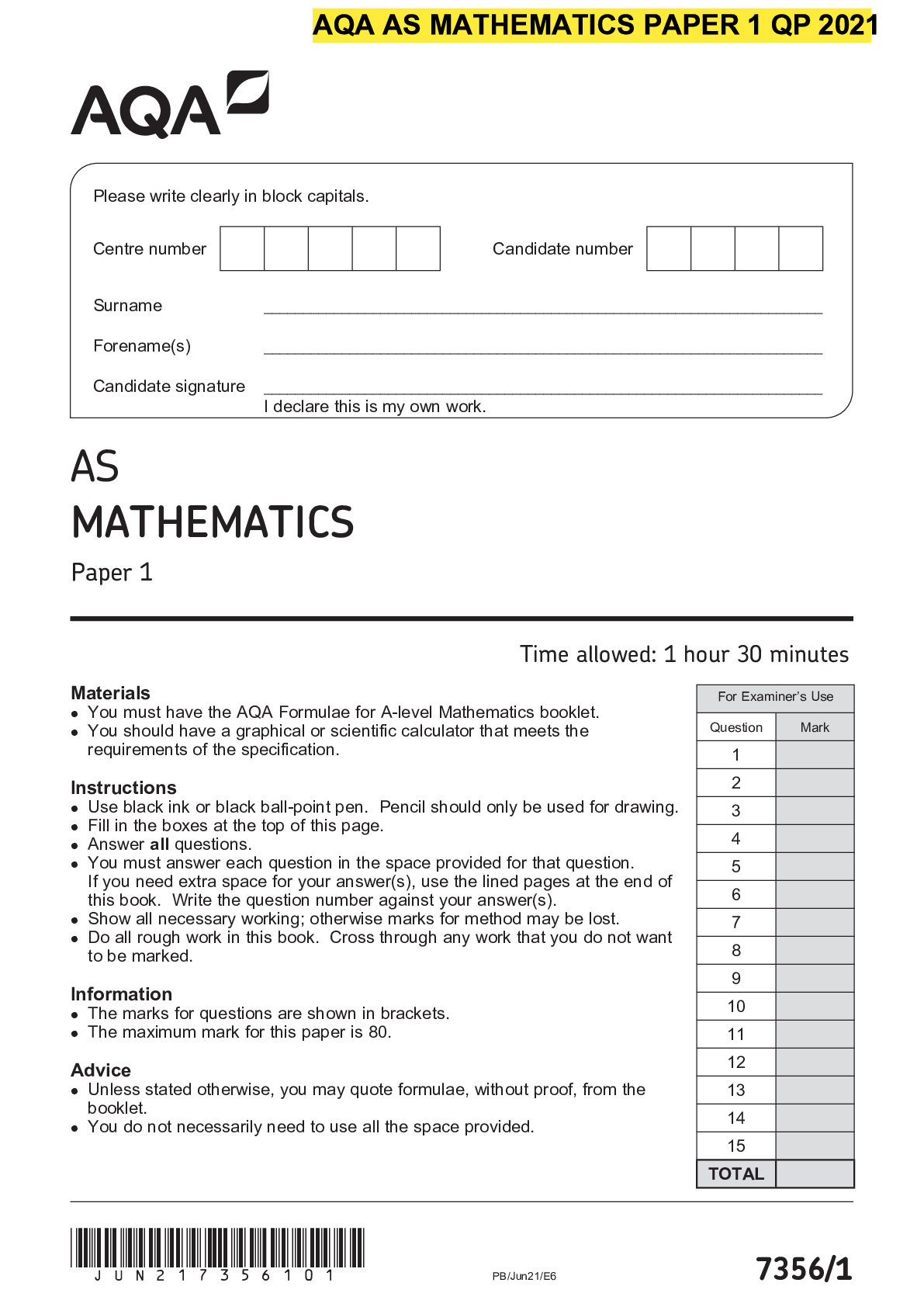Linguistics > AS Mark Scheme > GCSE - FRENCH 8654/L - Paper 1 Listening foundation Tier (All)
GCSE - FRENCH 8654/L - Paper 1 Listening foundation Tier
Document Content and Description Below
Listening and Reading tests General principles of marking Non-verbal answers Follow the mark scheme as set out. Verbal answers (English or target language) 1. The basic p... rinciple of assessment is that students should gain credit for what they know, understand and can do; provided their written response communicates the required message without ambiguity, it will get the mark. The following guidance should be borne in mind when marking. (a) Credit should be given for all answers which convey the key idea required intelligibly and without ambiguity. This applies whether the answer is in English or target language. A separate assessment of spelling, punctuation and grammar is not required because of the nature of the answers. However, these aspects are an integral part of assessing communication and marks cannot be awarded where errors in spelling, punctuation or grammar lead to a failure to communicate the required information without ambiguity. (b) Where a student has given alternatives or additional information in an answer, the following criteria should be applied: – if the alternative/addition does not contradict the key idea/make it ambiguous, accept – If the alternative/addition contradicts the key idea or makes it ambiguous, reject. (c) Where numbered lines are given within a question/section of a question, credit should be given for correct answers, no matter which line they appear on. (d) Where a question has more than one section (eg (i) and (ii)), a candidate may include as part of the answer to one section the information required to answer another section. Eg, in Listening, information required to answer section (ii) might be given as part of the answer to section (i). In such cases, credit should be given for having answered section (ii), provided that no incorrect answer has been given for that section in the correct place on the question paper. 2. In questions where students are asked to give for example a list of three items, only the first three items they write down should be considered for assessment purposes. 3. No mark scheme can cover all possible answers. When in doubt, look for the key idea. 4. Where a student has crossed out an answer and what was underneath remains legible then it should be marked. When part of an answer is crossed out, then only what remains should be considered. 5. .../.. means that these are acceptable alternative answers in the mark scheme. (.....) means that this information is not needed for full marks to be awarded. 6. In questions which are T/F/? or ✓/X/? in either Section A or Section B, a mix and match approach should be tolerated and credit given where it is clear and unambiguous (eg consistent use by the candidate). If candidates write ‘True’ instead of ‘V’ for Vrai in Section B, this should also be credited despite the wrong language being used. [Show More]
Last updated: 1 year ago
Preview 1 out of 8 pages
.png)
Reviews( 0 )
Document information
Connected school, study & course
About the document
Uploaded On
Jun 06, 2022
Number of pages
8
Written in
Additional information
This document has been written for:
Uploaded
Jun 06, 2022
Downloads
0
Views
43

.png)
.png)
